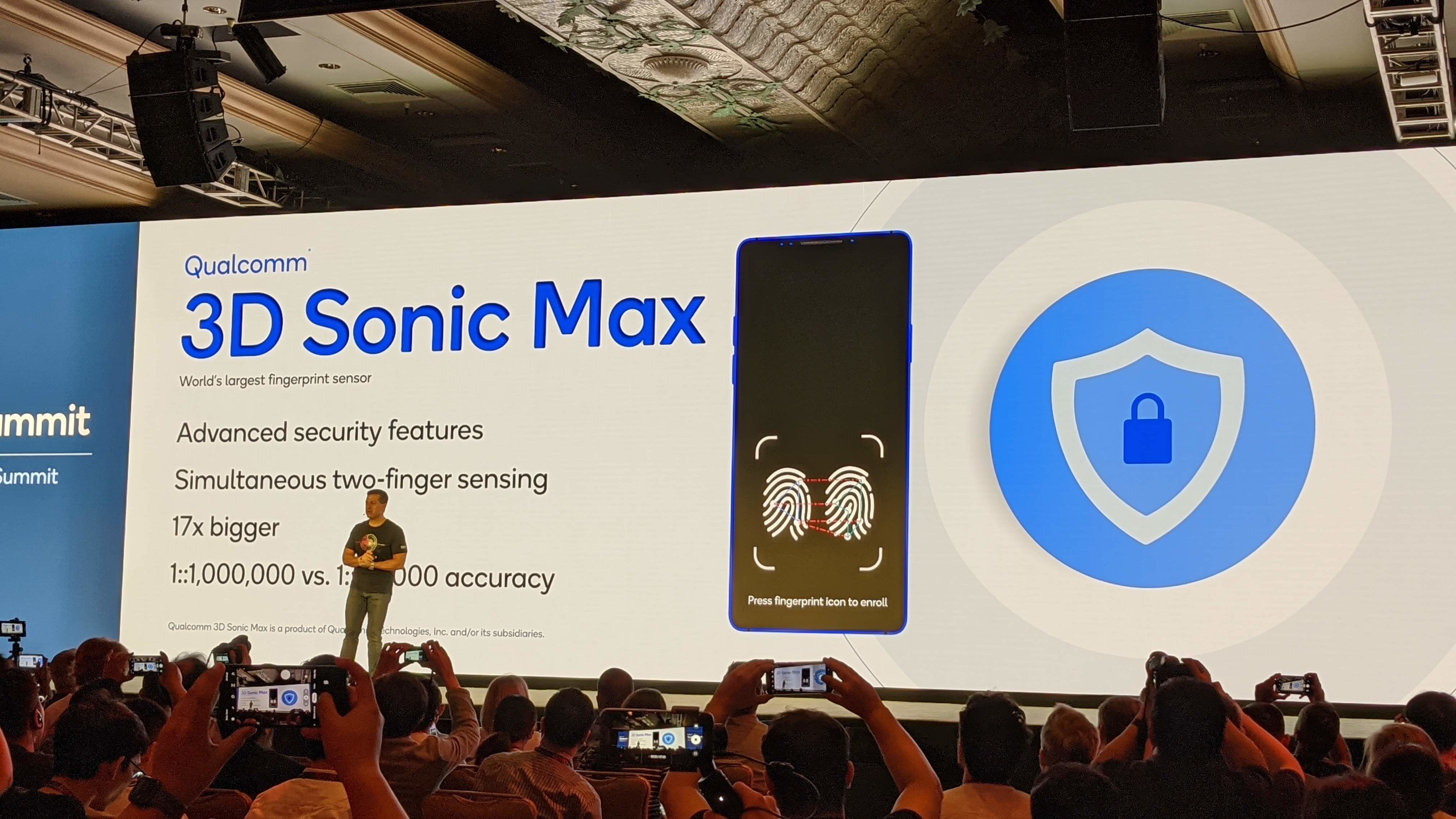Qualcomm announced its new "3D Sonic Max" fingerprint scanner at the company's annual tech summit this morning, and the biggest improvement is, well, that it's big. The new version of the ultrasonic sensor is allegedly a full 17 times larger than the previous generation, measuring 30.6x19.2mm. In standard measurement, that's around .91 square inches, about equal to the surface area of the coin face of two pennies.
That's much, much larger than most existing fingerprint scanners in smartphones, ultrasonic or optical, and should theoretically result in far fewer bad reads, as the area in which you can place a recognized portion of your finger is greatly expanded (think of it as shooting an arrow at a bullseye the size of the whole target). Of course, this isn't actually a new concept: optical fingerprint readers can and have been similarly enlarged. Earlier this year, Vivo unveiled a concept phone in which the entire screen acts as a fingerprint reader. The drawback was, predictably, money: Vivo openly admitted that the cost of such a massive scanner was prohibitive, and wouldn't be feasible in the near term for a consumer product. Qualcomm's massive chipset business means it can likely offer its enlarged scanner at an aggressive price to lure in customers, but the company hasn't commented on how much more expensive this new version will be.
My experience with the Qualcomm fingeprint scanners on Samsung's 2019 flagships, the Galaxy S10 and Note10, has been less than stellar. "Drift" has been a persistent problem for me—essentially, the phone unlearns your fingerprint over time—causing a much higher proportion of failed reads than traditional capacitive or even newer in-screen optical scanners. Perhaps enlarging the scanner could mitigate this to a greater degree.
Qualcomm had a very public and very embarrassing incident with its ultrasonic tech just over a month ago, when it was discovered that Galaxy S10 phones could have their biometric security completely circumvented by screen protectors, leading the scanner to generate false positive reads. The issue has since been patched, but it's sure to be a black mark on Qualcomm's still-forming track record as a supplier of such components.
When can you expect to see phones with the 3D Sonic Max? That's a great question, and one to which Qualcomm currently has no answer. Scoring Samsung was a massive win for Qualcomm this year, so it's entirely possible the deal was already sealed for 2020's Galaxy S11, but we don't know at this point. Essentially no other smartphone manufacturer of note adopted Qualcomm's scanners, with the vast majority of in-screen readers being of the optical variety. In my own testing of some of the newest iterations of those optical scanners, I found them considerably more reliable and even faster than those in 2019's Samsung flagships, with one exception: bright, direct sunlight. Optical scanners tend to have difficulty in extremely bright conditions due to the reflectivity of the display panel, which can in effect "blind" the sensor. Because Qualcomm's solution relies solely on ultrasonic pulses to read a print, it doesn't suffer from this issue.
Qualcomm still has a steep hill to climb: manufacturers have overwhelmingly chosen optical in-screen solutions to date, and with secure face unlock arriving, the demand for fingerprint scanners could start to dry up altogether.

